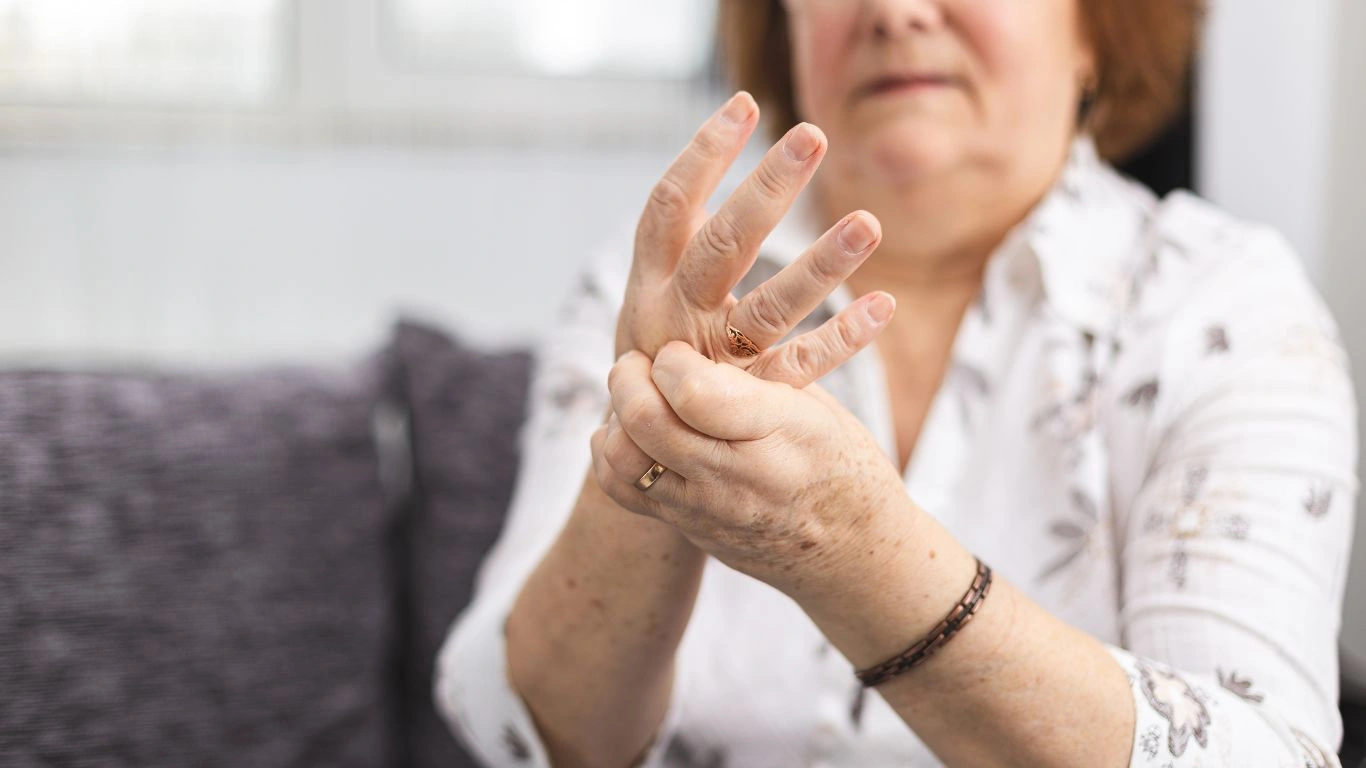How to Reduce Swelling in Rheumatoid Arthritis Effectively
If you or someone you care about is living with rheumatoid arthritis (RA), you’re likely familiar with how frustrating it can be. One of the most common and uncomfortable symptoms of RA is swelling, which can affect joints, hinder movement, and lead to pain. As someone who’s worked with countless individuals facing this challenge, I’ve seen first-hand how impactful it can be. If you’re wondering how to reduce swelling in rheumatoid arthritis, you’re not alone, and I’m here to help. Let’s break things down together and explore effective, actionable strategies you can use to manage swelling and get back to doing what you love!
What Causes Swelling in Rheumatoid Arthritis?

Swelling in rheumatoid arthritis is mainly caused by inflammation. RA is an autoimmune condition where your immune system mistakenly attacks healthy tissues, particularly in your joints. This can lead to swelling, pain, stiffness, and even potential long-term damage to the joints over time. When inflammation occurs, fluid builds up around the affected joint, which causes the visible puffiness and tenderness that many people with RA experience.
Interestingly, it’s not just about your joints. Inflammation can also affect surrounding tissues, such as tendons and ligaments, contributing to a generalized feeling of discomfort. For those with RA, swelling is not only a physical concern; it can also impact emotional well-being, as it often limits mobility and affects daily activities. I’ve worked with many patients who felt discouraged by the persistent swelling that comes with RA, but the good news is that there are plenty of ways to manage it effectively.
How to Reduce Swelling in Rheumatoid Arthritis: Tips That Work

Now that we know what causes swelling in RA, let’s dive into how you can take control of it. From lifestyle changes to medication and therapy, there are several avenues you can explore to reduce inflammation and alleviate that painful swelling.
1. Medications: The First Line of Defense
For many, the first step in reducing RA-related swelling is medication. There are several different types of medications that can help manage inflammation and reduce swelling, including:
- Nonsteroidal anti-inflammatory drugs (NSAIDs) – Over-the-counter options like ibuprofen and naproxen can provide relief by reducing inflammation and swelling in the joints.
- Disease-modifying antirheumatic drugs (DMARDs) – These drugs are designed to slow down the progression of RA by targeting the underlying immune response causing the inflammation.
- Biologic therapies – These advanced treatments target specific parts of the immune system to help control inflammation and reduce swelling.
- Corticosteroids – For short-term flare-ups, steroids like prednisone can reduce swelling quickly by suppressing inflammation.
As a RA expert, I’ve seen how these medications can truly make a difference in managing symptoms. However, medication alone is often not enough, so it’s crucial to take a holistic approach to your treatment plan, including lifestyle and self-care adjustments.
2. Apply Ice and Heat Therapy

One of the most accessible ways to tackle swelling is through temperature therapy. Ice packs and heat pads can help reduce joint inflammation, relieve pain, and reduce swelling in the affected areas. But when should you use ice versus heat?
- Ice: Use ice for acute flare-ups or when swelling is sudden. Ice helps to numb the pain and constrict blood vessels, which reduces inflammation.
- Heat: Heat therapy works best for chronic stiffness and soreness. It helps relax muscles and improve blood flow, which can help reduce long-term swelling and stiffness.
Just be careful to avoid direct contact with ice or heat to prevent injury. Always wrap the ice or heat source in a cloth before applying it to your skin, and use it in intervals of 15-20 minutes for optimal results.
3. Elevate Your Limbs
If your joints are swelling, elevating your legs or arms can help reduce the fluid buildup in those areas. Elevating a swollen joint helps promote better circulation and drainage, reducing swelling naturally. If you’re experiencing swelling in your knees, ankles, or feet, try propping them up with pillows while you relax or sleep. For your arms and hands, elevate them on cushions while you sit or recline.
By incorporating this into your routine, you might be surprised at how much it can ease the discomfort and make the swelling go down more quickly.
4. Exercise and Movement
It may sound counterintuitive to move when your joints are swollen and painful, but gentle exercise can be one of the most effective ways to combat inflammation in rheumatoid arthritis. Staying active helps keep your joints flexible and strengthens the muscles surrounding them, which reduces strain and swelling.
Low-impact exercises, such as swimming, walking, or cycling, can help reduce swelling and improve joint function. As an expert in RA management, I’ve seen patients significantly benefit from incorporating regular movement into their daily routine. Just make sure to avoid high-impact exercises or overexerting yourself during flare-ups. Start slow and listen to your body!
5. Diet and Nutrition: Fueling Your Body for Less Inflammation

When it comes to reducing swelling in rheumatoid arthritis, what you eat can make a significant impact. I’ve always emphasized the importance of a balanced diet in managing RA symptoms. There’s a growing body of evidence suggesting that certain foods can either trigger or reduce inflammation in the body. Adopting an anti-inflammatory diet can be a game changer for many people with RA.
So, what should you be eating to fight off inflammation? Let me share some key foods that I’ve seen work wonders for my patients and in my own experience:
- Fatty Fish: Salmon, sardines, and mackerel are packed with omega-3 fatty acids, which have been shown to reduce inflammation. I always recommend including fatty fish in your diet at least twice a week.
- Leafy Greens: Vegetables like spinach, kale, and broccoli are rich in antioxidants and fiber, both of which are essential for reducing overall inflammation in the body.
- Turmeric: This golden spice contains curcumin, a compound known for its anti-inflammatory properties. Adding turmeric to your meals or drinking turmeric tea can help bring down swelling.
- Olive Oil: Extra virgin olive oil is a healthy fat that contains oleocanthal, a compound that works similarly to ibuprofen in reducing inflammation. Swapping out butter for olive oil is an easy way to boost your anti-inflammatory intake.
- Nuts and Seeds: Walnuts, almonds, and flaxseeds are full of omega-3s and other healthy fats that can help fight off joint inflammation.
As tempting as it may be to reach for processed and sugary foods, these can actually worsen inflammation and exacerbate symptoms. It’s important to minimize your intake of refined sugars and processed meats, as they tend to promote inflammation in the body. I’ve noticed that many of my patients report feeling less pain and swelling once they eliminate or reduce these foods from their diet.
6. Stress Management: Keeping Your Mind and Body in Balance

It’s no surprise that stress can have a big impact on our physical health. For those with rheumatoid arthritis, stress is often a trigger for flare-ups, which leads to increased swelling and discomfort. Over the years, I’ve observed that managing stress is just as important as managing physical symptoms. It’s a key part of the overall treatment approach.
When we’re stressed, our body releases cortisol, a hormone that can increase inflammation. This is why I always encourage my patients to incorporate stress-reduction techniques into their daily routine. Here are some strategies that have been particularly effective in reducing both physical and mental stress:
- Deep Breathing Exercises: Taking slow, deep breaths can help activate the parasympathetic nervous system, which is responsible for calming the body down. When you’re feeling tense or stressed, try a few minutes of deep breathing to bring your heart rate down and ease inflammation.
- Meditation and Mindfulness: Meditation helps to center your mind and can promote relaxation. Even just 10-15 minutes a day of mindfulness practice can make a huge difference in how your body handles stress and inflammation.
- Yoga: Yoga is another great tool for reducing both physical and mental stress. It combines gentle stretching with breathwork, which can ease joint stiffness, relax muscles, and lower stress levels. I recommend starting with a beginner class or even following along with online videos if you’re new to it.
- Progressive Muscle Relaxation (PMR): This technique involves tensing and relaxing muscle groups throughout your body. It’s a great way to release built-up tension, and when practiced regularly, it can lower inflammation and improve overall well-being.
In my experience, people who regularly incorporate these stress-management techniques tend to experience fewer flare-ups and less swelling. It’s a simple but effective way to support your body’s ability to heal and stay balanced.
7. Consider Physical Therapy for Joint Support
If you’ve been living with rheumatoid arthritis for a while, you might already know the importance of protecting your joints. When RA causes swelling, it can also weaken the surrounding muscles, leading to a decreased range of motion and increased stiffness. This is where physical therapy (PT) can be a game-changer.
Physical therapists are trained to help individuals with RA improve their joint mobility and strength. They design personalized exercises that target the muscles around the joints affected by swelling. These exercises can help:
- Strengthen muscles to take pressure off swollen joints
- Improve flexibility and range of motion
- Correct improper posture and movement patterns that may exacerbate pain or swelling
- Reduce the risk of joint damage in the long term
In my experience, patients who commit to physical therapy often report feeling stronger, with better control over their joint movement and less swelling over time. It’s an investment in your long-term health that can pay off significantly. Your therapist might also teach you strategies for managing pain and preventing further joint damage, which can be incredibly helpful in your daily life.
8. Rest and Recovery: Don’t Underestimate the Power of Sleep
In our busy, always-on world, it can be tempting to power through the day and neglect the need for rest. However, getting proper rest is crucial when managing rheumatoid arthritis. When you’re sleeping, your body is working to repair itself, reduce inflammation, and restore energy levels. If you’re not allowing yourself adequate sleep, your body may struggle to manage RA symptoms effectively.
For better recovery and to reduce swelling, try these sleep tips:
- Set a consistent sleep schedule: Going to bed and waking up at the same time every day helps regulate your body’s internal clock and improves the quality of your sleep.
- Create a calm sleep environment: Make your bedroom as quiet, dark, and cool as possible. Consider using a fan, blackout curtains, or earplugs if needed.
- Sleep in a supportive position: Use pillows to support your body and joints. For example, if your knees are swollen, placing a pillow between them while you sleep can help reduce pressure.
It’s also important to listen to your body when it needs rest. I always remind my patients that overworking yourself can cause inflammation to spike. Allowing yourself the time to rest and recover is an essential part of managing RA effectively.
Case Studies & Real-Life Examples

Let me share a couple of real-life examples of patients I’ve worked with who’ve successfully reduced swelling through a combination of methods we’ve discussed in this article. These stories truly illustrate the power of consistency and taking a holistic approach to managing rheumatoid arthritis.
Case Study 1: Sarah’s Journey with RA
Sarah, a 38-year-old mother of two, came to me a few years ago feeling incredibly frustrated with her RA flare-ups. Her knees and hands were often swollen, and she found it difficult to keep up with her kids or work. After an in-depth discussion about her lifestyle, I suggested we start with a combination of medication, physical therapy, and dietary changes.
Sarah was initially hesitant about making significant changes to her diet, but after learning about the anti-inflammatory benefits of foods like leafy greens and fatty fish, she became more open to giving it a try. She also began taking fish oil supplements and started a gentle yoga routine. Over the course of three months, Sarah saw a noticeable reduction in swelling, especially in her knees, and her energy levels improved significantly. The swelling in her hands, which had been especially troublesome for her, also started to subside.
Today, Sarah’s RA is much more manageable. While she still has occasional flare-ups, she now has the tools and knowledge to reduce swelling and stay active. Her dedication to her treatment plan, including stress management, diet, and exercise, has made a world of difference in her quality of life.
Case Study 2: Mark’s Success with Joint Protection Techniques
Mark, a 52-year-old who’s been living with RA for nearly a decade, came to me complaining of severe joint pain and swelling in his wrists and elbows. Mark had tried various medications over the years, but the side effects were often overwhelming, and he was reluctant to rely on them long-term.
In our sessions, we focused on joint protection strategies, such as the use of braces and splints during the day, and we explored physical therapy exercises aimed at improving strength and flexibility. Mark also learned how to modify his daily activities to prevent excessive strain on his swollen joints. We combined these techniques with diet adjustments, particularly focusing on reducing processed foods and incorporating anti-inflammatory ingredients like turmeric and olive oil.
After a few months of consistent practice, Mark reported feeling significantly better. His pain levels dropped, and the swelling in his elbows and wrists improved dramatically. He could also return to activities like gardening, which had previously been too painful. Mark was able to regain control of his condition and now uses his experience to encourage others in his support group to take a proactive approach to managing RA symptoms.
Key Takeaways: What You Need to Remember
As we wrap up this article, let’s quickly recap the key takeaways that you should keep in mind when it comes to reducing swelling in rheumatoid arthritis:
- Anti-inflammatory Diet: Focus on foods like fatty fish, leafy greens, and turmeric while reducing processed foods and sugars. This can significantly help reduce inflammation and swelling.
- Physical Therapy & Exercise: Gentle exercise like yoga, swimming, or walking can improve joint mobility and strength, helping to reduce swelling in the long term.
- Stress Management: Techniques like deep breathing, meditation, and progressive muscle relaxation can help manage the stress that can exacerbate RA symptoms.
- Joint Protection & Rest: Make sure to protect your joints using braces or splints, and don’t underestimate the power of adequate rest and recovery. A balanced approach is key.
Remember, managing rheumatoid arthritis is a journey. It takes time, patience, and a combination of different strategies to reduce swelling and improve your overall well-being. You don’t have to go through it alone – reach out to professionals, whether it’s your doctor, physical therapist, or support groups, to get the guidance you need.
FAQs
1. Can reducing swelling completely eliminate my RA symptoms?
While reducing swelling can significantly improve your quality of life and reduce pain, rheumatoid arthritis is a chronic condition. The goal is to manage symptoms effectively, reduce flare-ups, and maintain a good quality of life. With the right approach, you can keep swelling under control and minimize its impact on your daily activities.
2. How long will it take to see results from these methods?
Results vary depending on the individual, but many people begin to notice improvements in their swelling and overall symptoms within a few weeks of implementing these strategies. However, long-term management is essential, and it may take several months for significant changes to be seen, especially when it comes to dietary and lifestyle changes.
3. Are there any specific medications I should try to reduce swelling?
There are several medications available to help manage swelling in RA, including NSAIDs, DMARDs, and biologic therapies. It’s essential to work closely with your healthcare provider to determine the best medication for your specific condition and needs.
Bonus: Additional Resources or DIY Tips
As an extra bonus, I wanted to share a few additional tips that can help you manage swelling and improve your daily comfort:
- Hot Epsom Salt Baths: Soaking in an Epsom salt bath can help soothe sore joints and reduce swelling. The magnesium in the salts can provide relaxation and ease tension.
- Compression Gloves or Sleeves: These can be helpful for swelling in the hands and wrists. They provide gentle pressure to reduce puffiness and improve circulation.
- Self-Massage: Gentle self-massage around the swollen joints can help increase circulation and reduce swelling. Be sure to use light pressure and avoid areas that are particularly inflamed.
Appendix: Table, References, Disclaimer, and Call to Action
References:
- Health Usias – Rheumatoid Arthritis Resources
- National Institute of Health: Rheumatoid Arthritis
- American College of Rheumatology
Disclaimer: This article provides general information and advice for managing swelling related to rheumatoid arthritis. Always consult with a healthcare provider before making any changes to your treatment plan or lifestyle.
Call to Action: If you’ve found this article helpful, I encourage you to share it with others who may benefit from it. Also, don’t hesitate to reach out to me for personalized advice or if you’d like to schedule a consultation. Together, we can manage your rheumatoid arthritis and work toward reducing swelling, so you can live a fuller, more active life!

Tarra Nugroho is a dedicated Nurse Practitioner with a strong foundation in family and preventive care. She brings both compassion and clinical expertise to her practice, focusing on patient-centered care and health education. As a contributor to Healthusias.com, Tarra translates medical knowledge into clear, empowering articles on topics like women’s health, chronic disease management, and lifestyle medicine. Her mission is simple: help people feel seen, heard, and informed—both in the clinic and through the content she creates. When she’s not caring for patients, Tarra enjoys weekend hikes, plant-based cooking, and curling up with a good health podcast.





